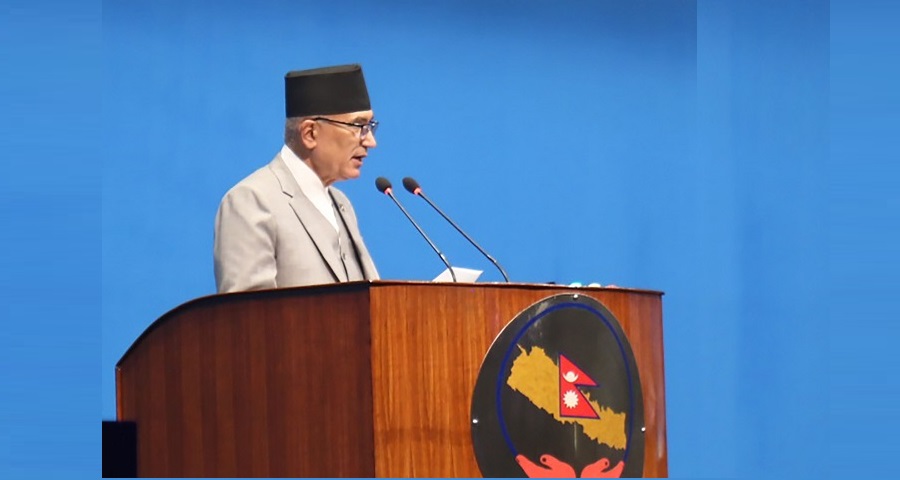
Economic Growth Reaches 4.61% in Fiscal Year 2081/82
The economic growth rate for Nepal in the current fiscal year 2081/82 is projected to be 4.61 percent. Deputy Prime Minister and Finance Minister Bishnu Prasad Paudel presented this data during the Economic Survey 2081/82 in Parliament on Thursday.
He informed that, except for Madhesh Province, Koshi Province, and Sudurpaschim Province, the growth rate of all other provinces has exceeded the national average of 4.61 percent.
National Economic Estimates
According to Finance Minister Paudel, the size of Nepal's economy is expected to reach NPR 61.07 trillion this fiscal year. During this period:
-
The agriculture sector is estimated to contribute 25.16 percent to the Gross Domestic Product (GDP),
-
The industrial sector is 12.83 percent,
-
The service sector is 62.01 percent.
The per capita Gross National Income (GNI) has increased to USD 1,517. The average consumer inflation stands at 4.72 percent.
Government Expenditure and Revenue
By the month of Falgun in the current fiscal year:
-
Federal expenditure has increased by 4.7 percent,
-
Federal revenue has grown by 12.6 percent.
Foreign aid commitments have significantly risen. The fiscal deficit of the federal government during this period amounts to NPR 16.19 billion. In comparison, the deficit during the same period in the previous fiscal year was NPR 70.36 billion.
As of Falgun 2081, the total outstanding public debt of the federal government has reached NPR 2.767 trillion, which is 43.8 percent of the total GDP.
Financial Access and Banking Services
The data presented by the Finance Minister indicates improved financial access.
He stated, "All local levels now have bank branches. On average, banking services are available to one person per 2,527 population through each branch of banks and financial institutions."
As of the end of Falgun 2081:
-
Deposits in banks and financial institutions have increased by 9.5 percent,
-
Loans provided to the private sector have increased by 7.7 percent,
-
The NEPSE index stood at 2,736.49 points,
-
Access to life insurance has reached 44.17 percent of the population.
Foreign Trade and Remittances
According to the Economic Survey, by Falgun of the current fiscal year:
-
Exports of goods have increased by 57.2 percent,
-
Imports have increased by 11.2 percent,
-
Remittance inflow has risen by 9.4 percent, reaching NPR 1.051 trillion.
Both the current account and balance of payments are in surplus. Foreign exchange reserves are at their highest, enough to support imports of goods and services for 14.3 months.
Investment and Infrastructure Development
So far, investments amounting to NPR 4.766 trillion have been approved by the Department of Industry and the Investment Board Nepal.
Electricity access, including alternative energy sources, has reached 99 percent of the population. The total installed electricity capacity has reached 3,602 megawatts.
The length of roads built under the strategic road network and local road network by the federal government has reached 36,132 kilometers.
Internet user density has reached 144.23 percent, and digital television services are accessible in 72 percent of households.
Human Development and Social Indicators
The Human Development Index (HDI) has increased to 0.622.
In the academic session 2081:
-
The net enrollment rate at the basic level (Grades 1–8) has reached 94.1 percent,
-
The net enrollment rate at the secondary level (Grades 9–12) has reached 55.8 percent.
As of Falgun in the current fiscal year, 37,984 underprivileged citizens have received free health services including medicines for heart, cancer, and kidney-related diseases.
Basic drinking water services have reached 96.85 percent of the population. The number of beneficiaries receiving social security allowances has reached 3,706,389.


